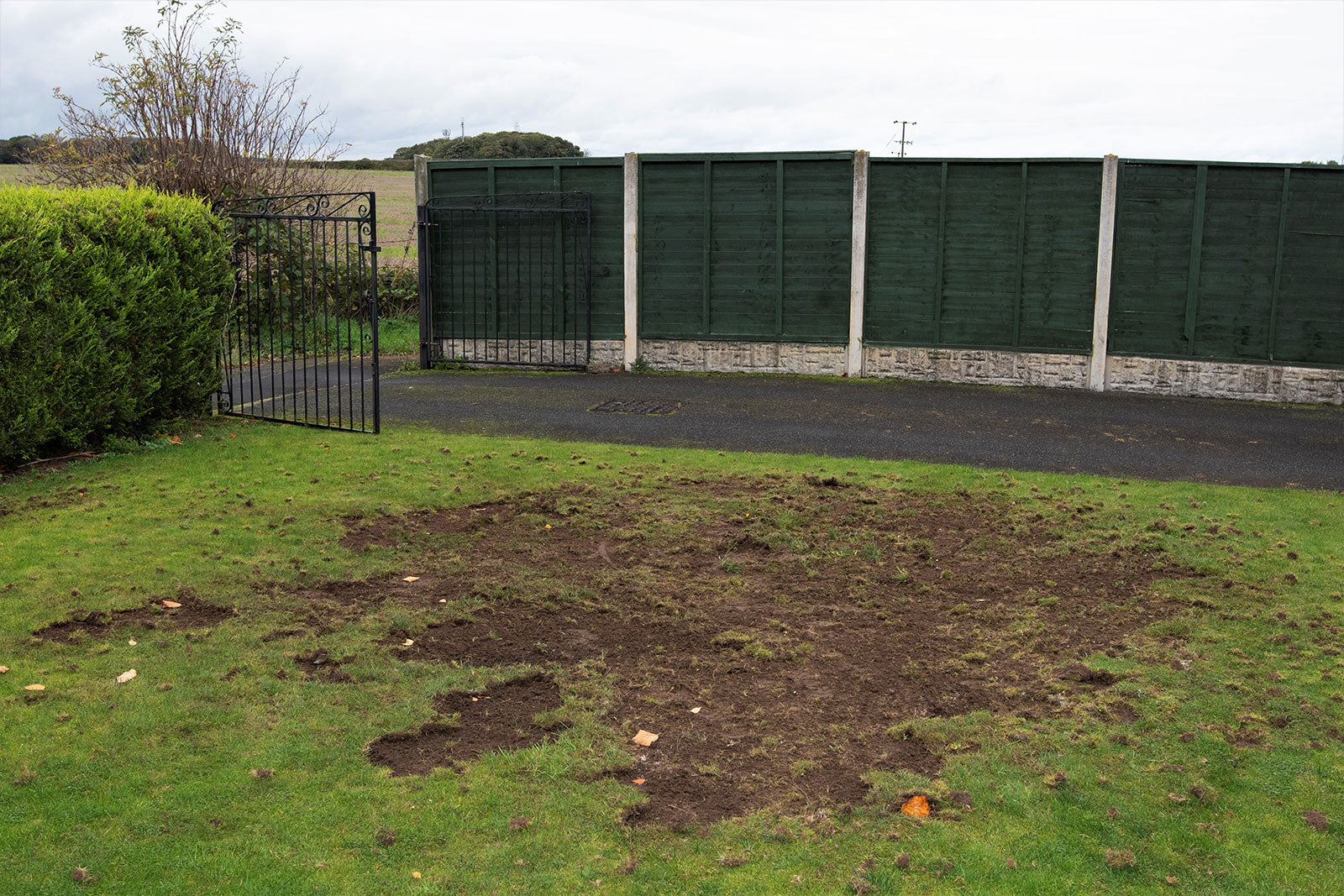How To Get Rid Of Chafer Grubs & Leatherjackets

Chafer grubs
Chafer grubs are very common throughout the UK and Europe, and they can often be found under loose turf. They are identifiable by their large curved white bodies, light brown heads, and several pairs of legs towards the head.
The beetle itself does not damage turf but the larvae or grub feeds on grass roots. The damage is often minimal from one grub but if they build into large numbers then the turf could start to suffer and dry out. They could be the reason why your grass is turning yellow and dying in patches.
Problems will escalate when local wildlife discover that nutritious and tasty grubs are residing on your lawn. You will quickly find birds pecking the lawn and in worse cases bigger animals such as hedgehogs, foxes and badgers may well be dining out on your turf. Needless to say, you can expect to lose large areas of lawn.
Before you seek to get rid of them you should consider the ecosystem. Remember that the grubs are a food source for wildlife so if you seek to control the grubs you will also be limiting a food source for the wildlife.
Natural Control
There is a more natural solution to controlling chafer grubs in the form of nematodes.
Nematodes are microscopic organisms that move in the manner of an eel or a worm. This variety of nematode are a natural parasite of the chafer grubs and once the nematodes find their prey, they invade it by entering natural body openings. Once inside, they release bacteria that stops the pest from feeding, quickly killing the grub. The nematodes then reproduce inside the dead grub and release a new generation of infective juvenile nematodes. These infective juveniles then disperse into the soil and search for further prey.
Nematodes are highly effective and can eradicate chafer bugs in just a few days.
Instead of hunting out these tiny nematodes to apply to your garden, there are ready-made products such as Sportnem-H Chafer Grub Killer. It is a natural, safe, and effective solution to your chafer grub problem.
Chemical Control
Chemical solutions for killing grubs for consumer use in the UK are illegal. You would have to hire a professional who will be licensed to use chemicals to treat the problem, and is properly trained and certified in using and applying pesticide products such as Acelepryn Insecticide.
Acelepryn Insecticide contains the active substance, chlorantraniliprole. It can be used to control chafer grubs and leatherjackets in amenity grassland and managed amenity turf. Please note that Acelepryn Insecticide is a professional product and by law, everyone who uses pesticides professionally must have received adequate training in using pesticides safely and be skilled in the job they are carrying out.
What is the best month to put down grub control?
Chafer grubs are generally most active between May and August – which is more than enough time to cause plenty of damage.
It is very important to catch them early while they are still small because the larger they grow the harder it is to get rid of them!
Always refer to the product label before applying but generally it is best to target the chafer grubs between May and August. The soil should be at least 10°C to fight the grubs.
Leatherjackets
Chafer grubs are not the only creature that can wreak havoc in your garden – so don’t confuse a chafer grub for a leatherjacket. Leatherjackets are the larvae of the European Crane Fly or Daddy Long Legs and do the same damage as the chafer grub, with their larvae feeding on the roots of grass plants. Unlike the chafer grub, these are legless and grey in colour. Also, if you see lots of Daddy Long Legs emerging from your garden then this is a tell-tale sign that you have leatherjackets.
Natural Control
Again, the natural control is a nematode product called Sportnem-T Leatherjacket Killer. These nematodes control the Leatherjackets in the same way as the Chafer Grubs.
Chemical Control
This is the same chemical that can be used on the Chafer grubs, and again this is a professional product that should only be used by qualified personnel.
We hope that after reading this article you feel better informed about dealing with chafer grub infections, but please do get in touch with our team if you have any further questions – we’d be delighted to help.
We hope you found this guide useful. Now that you have a better understanding, please take a look at our range of biological pest control products.
